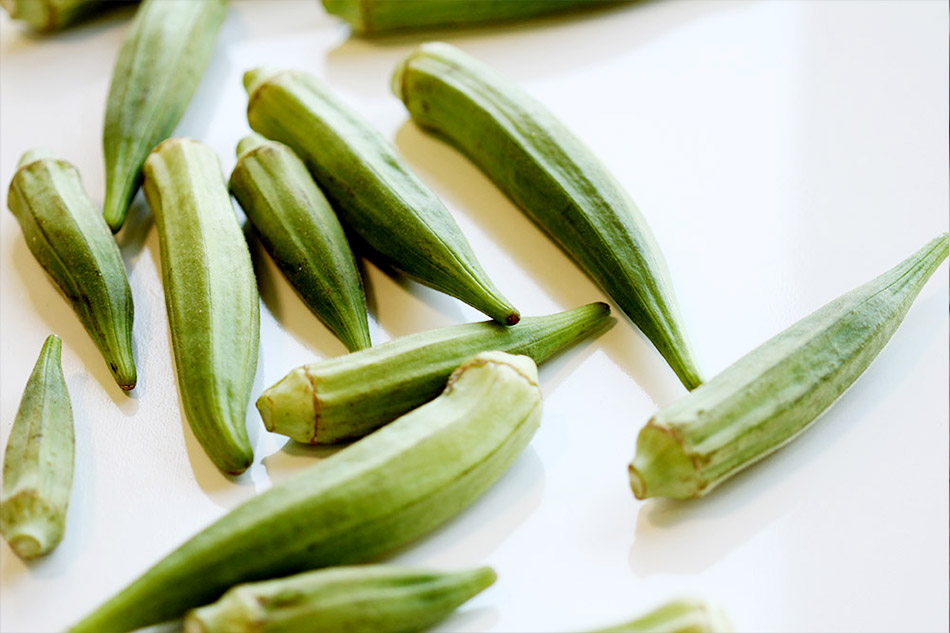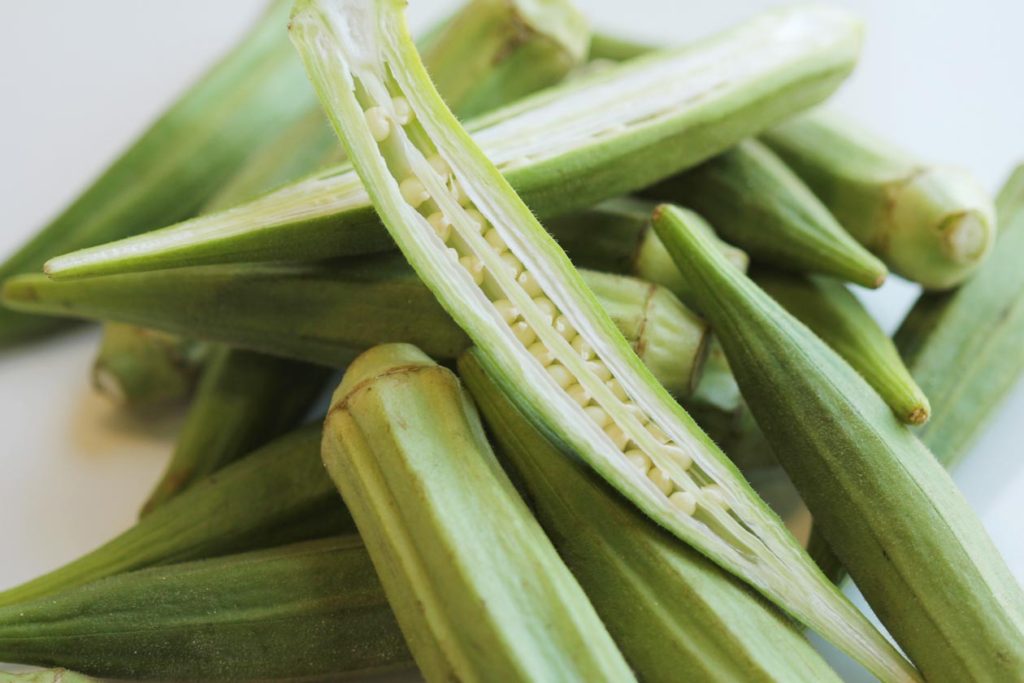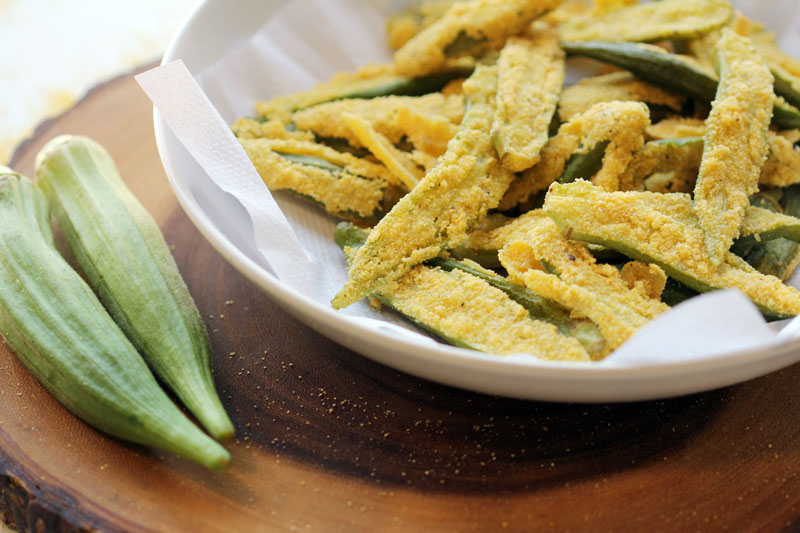Okra: The Misunderstood Veggie
[shareaholic app="share_buttons" id="27983777"]
Okra – Vegetable
What is Okra?
Okra may look basic but it is anything but. This vegetable, also known as Ladies’ Fingers, is enjoyed all over the world and can be found in cuisines from North America, to Africa, to Asia! They are cultivated mostly for their edible green seed pods in tropical, subtropical, and warm temperate regions and are in the same plant family as hibiscus and cotton!

Okra Seeds
What is it like?
The flavor is somewhat like a cross between asparagus and eggplant. What is unique about it is that it is mucilaginous, which means that when cut and/or cooked, it becomes gooey or slimy in texture (sounds weird, but tastes great).
What are the health benefits?
Okra is a superfood and contains potassium, vitamin B, vitamin C, folic acid, and calcium. It’s low in calories and has a high fiber content. It also has been suggested to help manage blood sugar.
How do I store?
The best okra should be a rich green color and should not be dull, dry, or limp. Do not wash them before storing as the moisture will cause them to become slimy. Store them in a paper bag in the warmest part of the refrigerator as extremely low temperatures can damage it. They don’t have a long shelf life so it is recommended to use within 2-3 days.
How to Cook?

Fried Okra
Since the goo inside of it is a natural thickening agent, it’s common to include it in soups and stews like gumbo! It is also excellent sautéed or fried. Because of its similar flavor, it can be used in place of eggplant in many recipes. Raw okra is also a perfect ingredient to throw into a salad. Just remember, it is SUPPOSED to be slimy and sticky!
Here’s an easy recipe you can cook this week:


